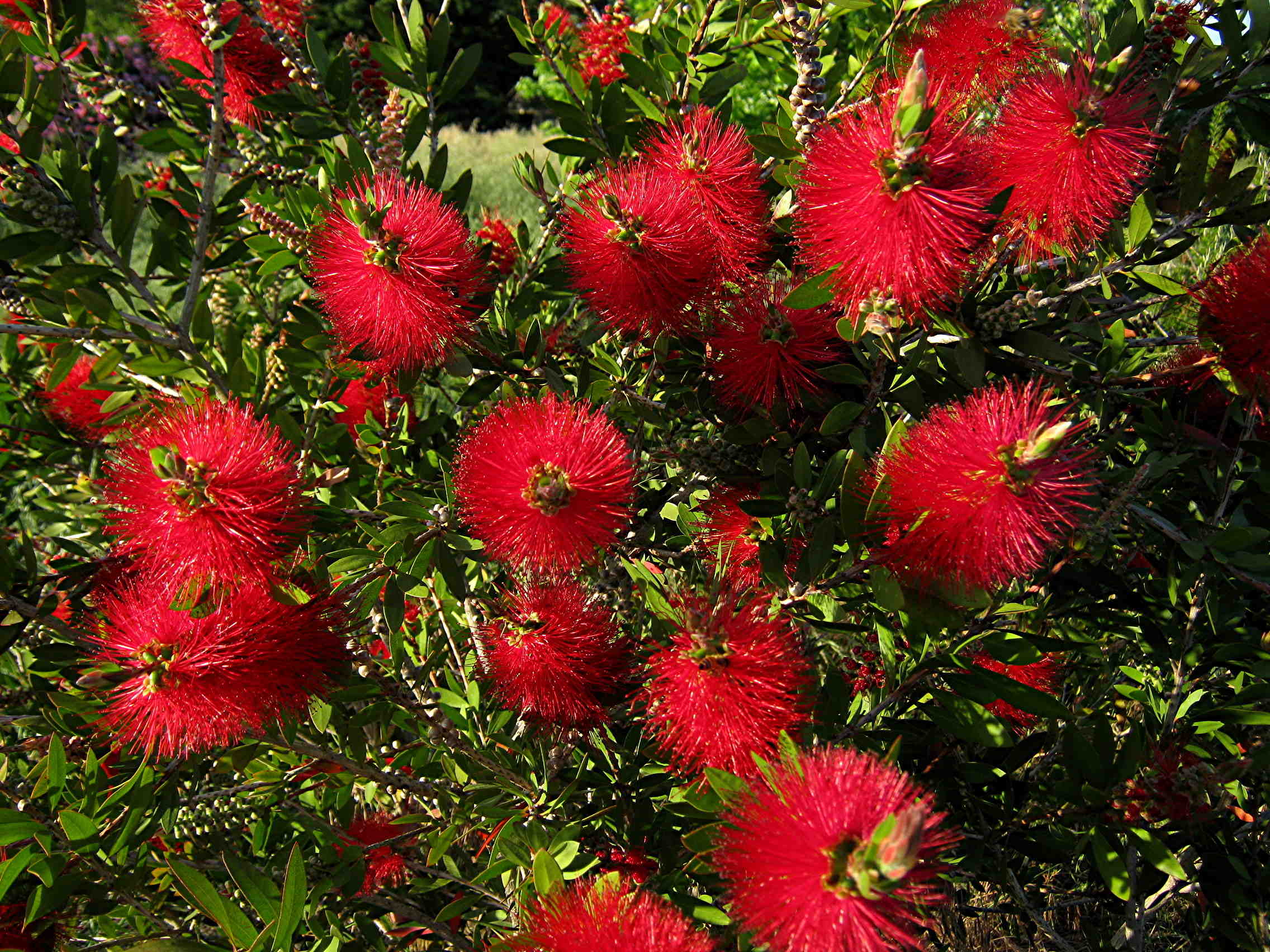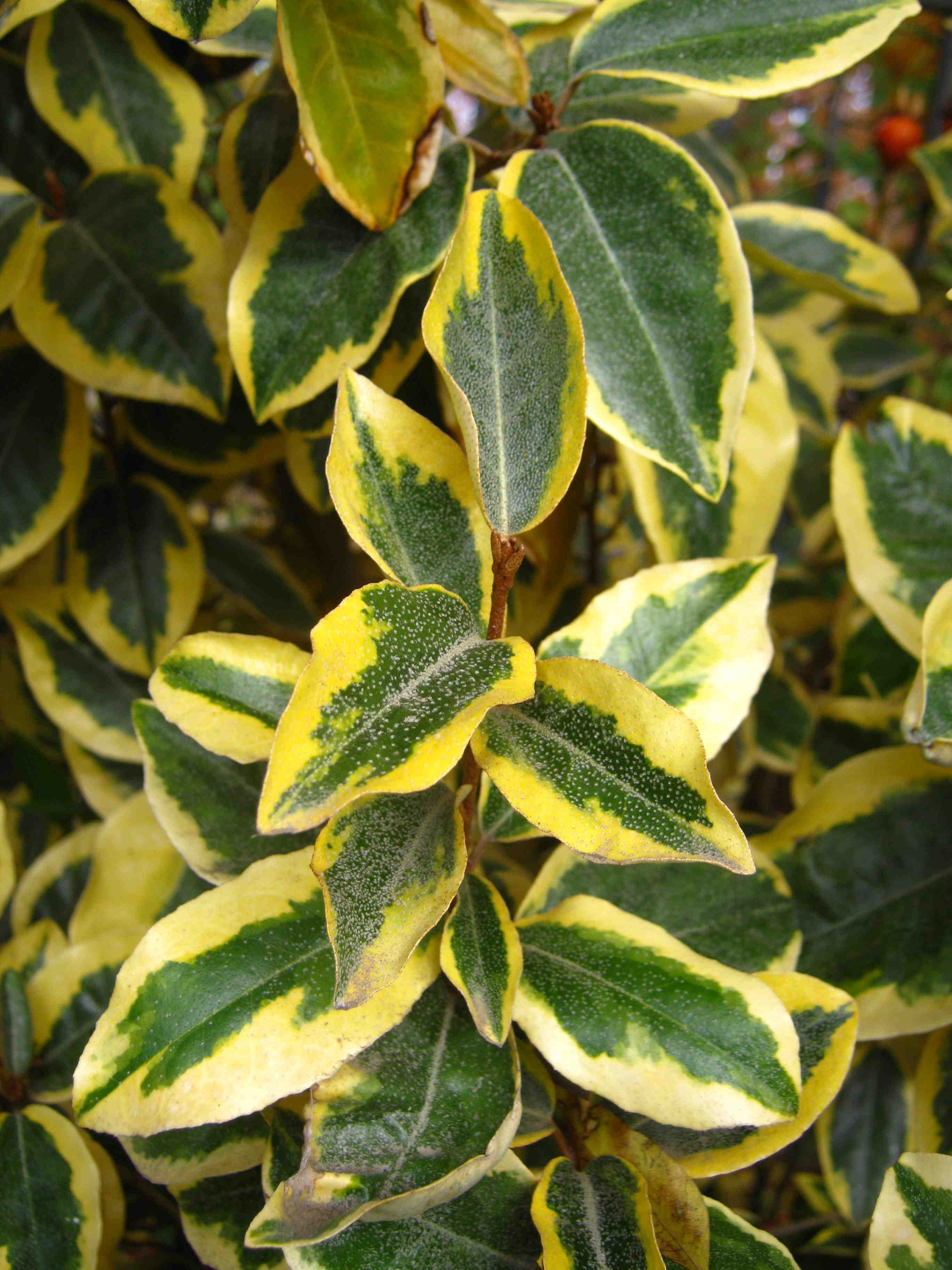Written for the Davis Enterprise, November 25, 2011
Click on any image for a larger version
This month we continue our theme of reducing water use in the landscape. It is estimated that 80% of residential water use goes to yard watering.
Last month's (October 2011) column focused on water use by lawns.
To recap:
* reduce total square footage of grass;
* plant seed of grass species that can use less water, such as fine fescues;
* replace some lawn areas with lower-water ground covers.
This month I'm going to focus on shrubs that make the backbone of the yard, providing privacy, attractive foliage, and seasonal flowers. Aesthetically, it is best to repeat one type, rather than having a hodge-podge of mixed foliage, and then add some of the others for contrast. If you have existing shrubs, interplant some of these listed, do some careful pruning for a couple of years, and then remove the more water-intensive types after the new ones grow up a bit.
What about your existing shrubs?
We see a lot of plants with problems resulting from watering too often, so just by watering correctly you can reduce your water bills and have a healthier landscape. Water slowly, deeply, and infrequently. When we ask about watering schedules, it is common to learn that shrubs are being watered 3 to 4 times a week. That's too often! And they're being watered for ten or fifteen minutes. That's not long enough!
Did you know that many or most of your landscape shrubs could go a week or more between waterings if you irrigate deeply enough each time? Many can go much of the summer on just a few deep irrigations, and some need no summer water at all!
Careful plant selection is another approach to reducing your water bill.
Choose trees, shrubs, and flowering plants that can live with reduced watering.
Here is a list of some shrubs that could be watered as little as once a month once established (which means after the first summer). Some require drought: California natives are sensitive to crown rot if watered too often. The others can be watered more often if necessary. All are evergreen unless noted as deciduous.
* Botanical name: Buddleia davidii
Common name: Butterfly bush
Butterfly bushes love sun, attract butterflies and hummingbirds, and bloom all spring and summer. There are many varieties, ranging from 6 feet to more than ten feet tall, with purple, pink, violet, or white flowers.
* Callistemon citrinus
Bottlebrush
Fast-growing, somewhat open growth habit benefits from pinching and shaping. Showy red flowers, off and on through the year, attract hummingbirds. Prone to iron chlorosis when irrigated.
* Chaenomeles japonica
Flowering quince
The first shrub to bloom in the late winter! Some stay under 3 feet; several varieties grow to 5 - 6 feet or more. Fruit, if any develops, makes unique, aromatic jelly. There are white, pink, orange, and red varieties. Deciduous.
* Dodonea viscosa 'Purpurea'
Purple hopseed bush
Fast-growing quick screen. Bronze foliage turns dark purple, almost maroon, in winter. Fairly open habit, but can be sheared for greater density.
* Eleagnus x ebbingei 'Gilt Edge'
Elaeagnus
Upright growth habit, thornless. Silvery leaves with bright golden margins. Flowers attract beneficial insects; edible fruit attracts songbirds.
* Escallonia rubra
Red escallonia
Big shrub with dark, glossy green leaves and dark red flowers. Leaves have a resinous odor. Flowers attract hummingbirds.
* Garrya elliptica
Coast silktassel
Dark green foliage on a large, dense shrub. Long tassels of flowers in late winter are interesting and attractive. 'James Roof' is a shorter, more compact variety than the species. This California native is best unirrigated.
* Grevillea species and varieties
Australian natives that have odd-shaped, showy pink or red flowers over a long season. All attract hummingbirds. There are dozens of varieties; check descriptions for winter hardiness in our area.
* Heteromeles arbutifolia
Toyon
Grows 2 to 3 feet a year, eventually more than ten feet tall. Flowers are very attractive to beneficial insects. Beautiful shiny red fruit hangs on into winter, attracts birds. There is a yellow-berried variety called Putah Gold, introduced by the Arboretum. This California native is best unirrigated.
* Lavatera maritima
Tree mallow
Also sold as L. bicolor. Fast grower. Gawky growth habit--shear it occasionally, or prune it back severely in the spring or fall. Flowers are light pink with dark rose veins. Blooms all summer.
* Rhamnus alaternus
Italian buckthorn
Fast-growing, upright, with dark shiny green, dense foliage. Flowers attract beneficial insects; small berries (you don't see them) attract songbirds. Great for a quick hedge for privacy. Don't overwater. The selected form John Edwards is more resistant to crown rot. Variegata has cream-variegated leaves, is slower growing and smaller.
* Rhamnus californica
Coffeeberry
Slow-growing native cousin of the buckthorn that looks very much like Toyon (Heteromeles), with similar, larger red berries in winter. Variety called Leatherleaf has larger, darker leaves. This California native is best unirrigated.
* Xylosma congestum
Shiny xylosma
One of the toughest landscape shrubs around. Tolerates heat, even reflected off a west wall; drought; shade. Can be trained into a beautiful small tree, clipped as a formal hedge, or trimmed for an informal screen.
Some plants usually grown as trees can be grown and pruned as shrubs.
* Arbutus unedo 'Compacta'
Strawberry tree
Showy flowers and fruit, beautiful bark like madrone. Fruit litter may be a problem, but it is edible and birds like it. Heat and drought tolerant. Grows 1 - 2 feet a year. Easily kept at 6 to 8 feet with one annual pruning.
* Ceanothus 'Ray Hartman'
Wild lilac
This variety grows to 10 - 15 feet or more. Attractive, large shiny leaves. Pretty medium blue flowers in large clusters in spring. Water deeply and very infrequently in summer.
* Citrus hybrids and varieties
Many varieties make excellent patio or container trees, or can be clipped as shrubs. Meyer lemons, kumquats, and satsuma mandarins are naturally dwarf. Minneola tangelo is especially attractive.
* Cotinus coggygria 'Royal Purple'
Purple Smoke tree
Purple leaves and purple flowers make a striking contrast with grey or glossy-leaved plants. Very tolerant of drought and heat. Gets iron chlorosis if irrigated heavily. Deciduous.
* Feijoa sellowiana
Pineapple guava
Plant named varieties if you want reliable fruit production. Edible flowers! Very drought tolerant. Fuzzy grey-green leaves make a nice contrast with red-leaved or shiny-leaved shrubs.
* Junipers:
Juniperus chinensis 'Torulosa' (also called 'Kaizuka')
Hollywood juniper
Striking, contorted upright growing juniper with dark green foliage. Excellent specimen plant. Very tough, drought-tolerant.
Juniperus scopulorum 'Gray Gleam'
Gray Gleam juniper
Other varieties of this species (Cologreen, Pyramidalis, Blue Haven) have similar growth habits. These are all pyramidal-shaped, upright growers useful in formal plantings. Wichita Blue is more cone-shaped. Very tough, drought-tolerant.
Juniperus virginiana 'Skyrocket'
Skyrocket juniper
Upright column like an Italian cypress. Useful for a formal effect in smaller gardens. Very tough, drought-tolerant.
* Laurus nobilis
Grecian Bay laurel
The bay leaf used in cooking. Very versatile garden plant. Large shrub, eventually growing to 30 feet +, but very upright habit and ease of pruning make it manageable. Will grow in total shade to full sun. Drought tolerant. Very easy to keep in a pot for years.
* Punica granatum
Pomegranates
All pomegranates tolerate heat, wind, drought, poor soil. Great choice for west exposure. Fruiting forms yield large crops here with no effort on your part. Fruitless forms with showy flowers are available and are equally tough.
* Vitex agnus-castus
Chaste tree
Light blue flowers; white form also available. Fast-growing large shrub or small tree with light green palmate leaves. Tolerates heat, drought; will grow in partial shade.
Previous (October 2011) article: Easy Steps to Reduced Water Use
Here are some lists of drought-tolerant plants




















